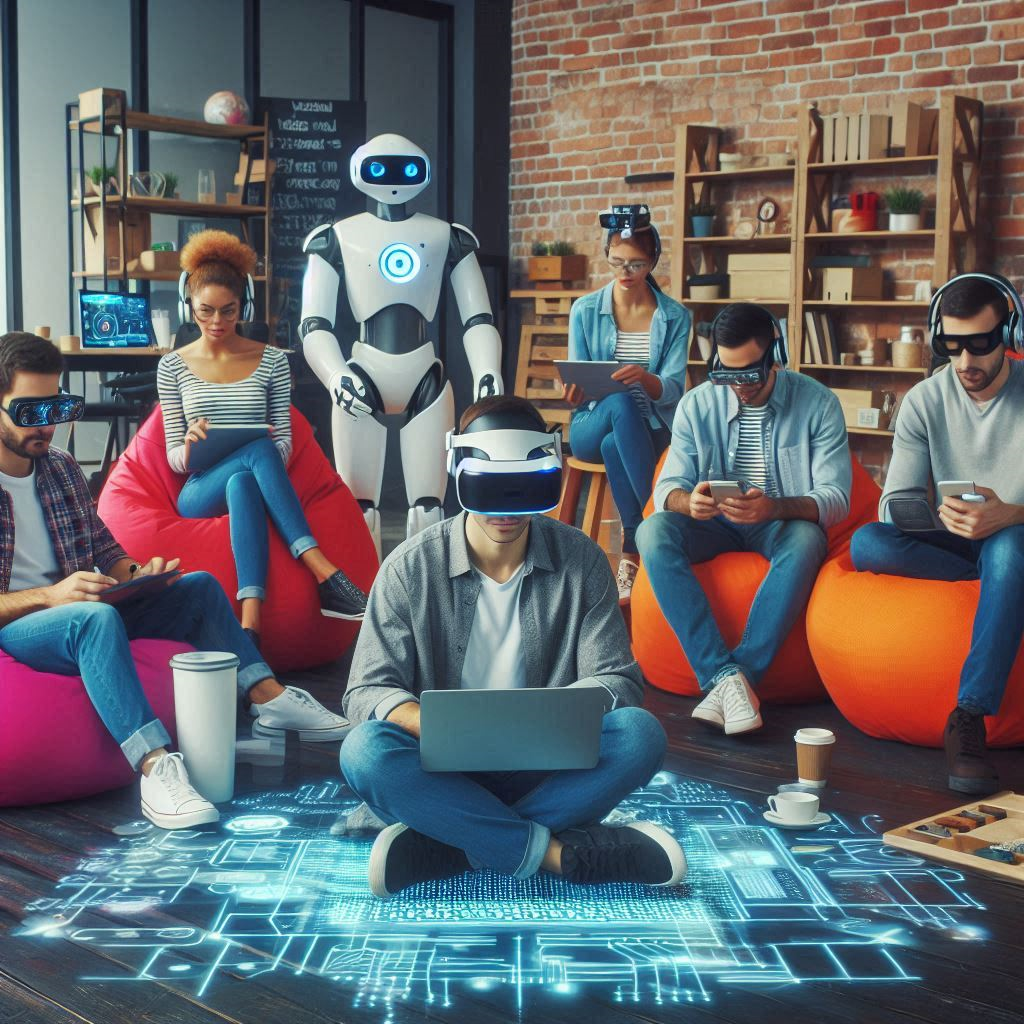Artificial Intelligence (AI) is a branch of computer science . Its mainly concerned with building machines capable of performing tasks that typically require human intelligence. AI works by first learning from large sets of data and patterns. Patterns that can explain or predict a given behavior or outcome. It uses fast, intelligent, iterative processing algorithms . These algorithms allow the software to test and measure its own performance and improve automatically.
Thank you for reading this post, don’t forget to subscribe!
Please support the blog by clicking ads and join the monetize programs , coming soon.
Artificial intelligence is intelligence—perceiving, synthesizing, and inferring information—demonstrated by machines. As opposed to intelligence displayed by humans or by other animals. Example tasks in which this is done include speech recognition, computer vision, translation between languages.
Examples
There are many examples of AI that are transforming a number of industries, including robotics, healthcare, transportation, finance and more. Some examples of AI include Face ID, the search algorithm, and recommendation algorithm, among others.
Artificial beings with intelligence appeared as storytelling devices in antiquity, and have been common in fiction, as in Mary Shelley’s Frankenstein or Karel Čapek’s R.U.R. These characters and their fates raised many of the same issues now discussed in the ethics of artificial intelligence.
There are many benefits of AI. Some of the advantages of implementing AI include:
- Eliminates human error and risk
- 24/7 availability
- Unbiased decision making
- Repetitive jobs
- Cost reduction
- Data acquisition and analysis
AI empowers organizations, governments and communities to build a high-performing ecosystem, and its profound impact on human lives is solving some of the most critical challenges faced by society
There are also risks associated with AI. Some of the risks include:
- Job displacement
- Bias and discrimination
- Security risks
- Lack of transparency and accountability
- Ethical concerns
AI is a powerful tool that can be used for good or bad purposes. It is important to be aware of the risks and take steps to reduce them.
AI can solve many problems by intelligently searching through many possible solutions. Reasoning can be reduced to performing a search. For example, logical proof can be viewed as searching for a path that leads from premises to conclusions, where each step is the application of an inference rule.
AI can help businesses in many ways. Some of the ways AI can help businesses include:
- Automating repetitive tasks
- Improving customer service
- Enhancing decision-making
- Increasing efficiency and productivity
- Reducing costs
AI can also help businesses gain insights into their customers and operations that would be difficult or impossible to obtain otherwise.
AI in Art and Design Working and AI Music
Artificial intelligence art is any artwork, particularly images and musical compositions, created through the use of artificial intelligence (AI) programs, such as text-to-image models and musical generators.
As with all new inventions , AI needs to be tested and used very often in order to improve it and fix the holes.
AI from AI says: Artificial intelligence (AI) is technology that enables a computer to think or act in a more ‘human’ way. It does this by taking in information from its surroundings, and deciding its response based on what it learns or senses1. AI works by combining large data sets with intuitive processing algorithms2. It is an entire machine learning system that can solve problems and suggest outcomes2. The technology enables machines to think, learn, make decisions, and adapt to their environment3. The based systems work by merging bulky sets of data with intelligent processing algorithms and run through multiple tasks extremely quickly in very little time4.
How does it Work?
AI is essentially software that can learn patterns from information. Think language, images, audio, online behavior and more. Using patterns from existing and new data, AI makes predictions to perform tasks that normally require human intelligence – like finding products we’re likely to buy or finishing a sentence you started to write.
Patterns can be something simple like related items similar to the one you’re now viewing in a shopping page , or other articles that contain the same words as in the current article you are reading. Or it can be a complex result that connects multi items and concludes the next big logic item you will need in light of what you have got. Like for example that rich man who just got a bent house and a bugatti, then he sure needs a nice yacht.
AI systems work by combining large sets of data with intelligent, iterative processing algorithms to learn from patterns and features in the data that they analyze.
Each time an AI system runs a round of data processing, it tests and measures its own performance and develops additional expertise.
Because AI never need a break, it can run through hundreds, thousands, or even millions of tasks extremely quickly, learning a great deal in very little time, and becoming extremely capable at whatever it’s being trained to accomplish.
head
But the trick to understanding how AI truly works is understanding the idea that AI isn’t just a single computer program or application, but an entire discipline, or a science.
The goal of AI science is to build a computer system that is capable of modeling human behavior so that it can use human-like thinking processes to solve complex problems.
To accomplish this objective, AI systems utilize a whole series of techniques and processes, as well as a vast array of different technologies.
By looking at these techniques and technologies, we can begin to really understand what AI actually do, and thus, how it works, so let’s take a look at those next.
Let’s take the example of autonomous driving. The vehicle receives data both visually through cameras but also using radar or different sensing technologies to recognise what’s happening in its environment. Simultaneously it is continuously receiving and monitoring data from how the vehicle is performing. AI uses and classifies that data to see whether the scenario the vehicle is facing requires some type of intervention and produces an output to the vehicle to navigate safely through the scenario it perceives.
Other Useful Resources
- : AI Painting Applications and Examples What is AI Art? Everything You Need to Know
- : All you need AI , AI in Painting, What it Means for Art
- : Why use AI and how to use, What is AI (Artificial Intelligence)?






Leave a Reply